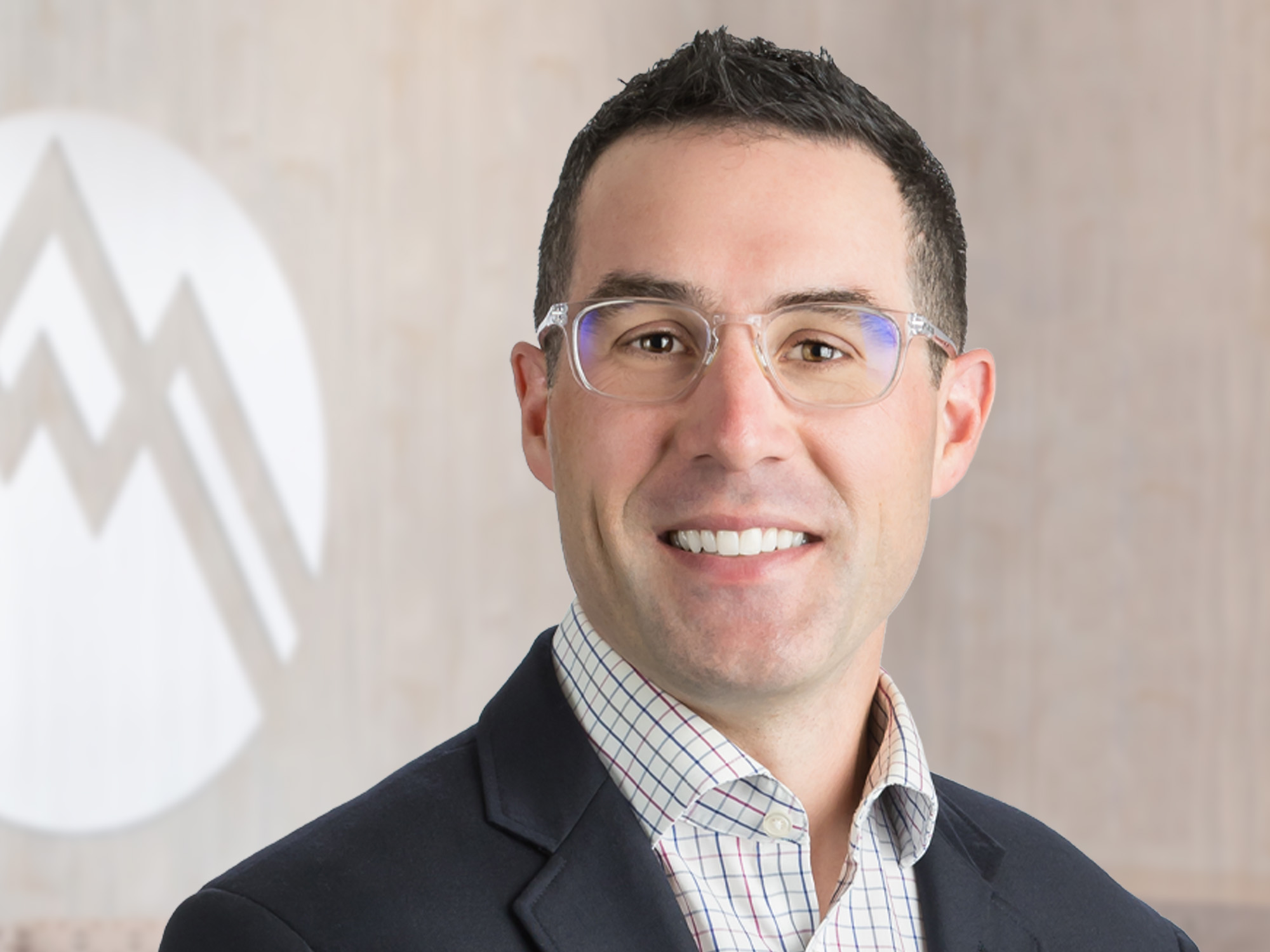Dr. Warner reviews the causes and symptoms of hip labral tears.
Hip pain can stop us in our tracks, making the simplest tasks difficult and uncomfortable to perform. The causes of hip pain are complex, but one of the most common is linked to a hip labral tear. The labrum is a ring of cartilage that lines the rim of the hip socket. Hip surgeon Dr. Brent Warner explains how the labrum works and discusses the symptoms that signal possible labral damage.
How the labrum works in the hip joint
“Composed of fibrocartilage, the labrum acts like a rubber seal,” says Dr. Warner. “It holds the ball at the top of your thighbone securely in the hip socket. It also contributes to hip stability by deepening the socket and protecting the joint surface. In addition, a healthy labrum helps to maintain hip alignment, and seals fluid inside the joint to enable smooth joint motion.”
Causes of a hip labral tear
A hip labral tear can be caused by a number of conditions. Dr. Warner identifies three of the most common causes:
- Arthritic degeneration. As we age, arthritis can take a toll on our hips and cause damage to the labrum.
- Repetitive motion or trauma. Athletes who regularly put their hips into a supraphysiologic position are predisposed to labral injuries. Examples include hockey players, gymnasts, and dancers. A sudden traumatic injury may also cause labral injury.
- Femoroacetabular impingement. People born with impingement anatomy may develop a hip labral tear or other hip joint damage.
Risk factors for labral tears
“The biggest risk factor for labral injuries is hip impingement,” notes Dr. Warner. “Impingement is a bone deformity you are born with. There is some thought that environmental factors may play a role in causing or worsening impingements early in life as well. For example, impingement seems to be more common in hockey players. We think there’s something about the skating motion and hip rotation that may contribute to developing anatomy that can lead to or worsen impingement. By and large, however, impingement is a congenital problem.”
There are two types of hip impingement.
- Pincer-type impingement. “This is Impingement of the hip socket,” explains Dr. Warner. “It happens when the socket is overly deep or overcovers the ball in the hip joint. “As a result, when you flex your hip up, the edge of the socket bumps into the femur, pinching or tearing the labrum.
- Cam-type impingement. “In this type of impingement, there’s a bump or prominence on the femur bone where the femoral head and neck join,” says Dr. Warner. “Again, when the hip flexes, that bump impinges on the edge of the socket, damaging the labrum. Many people have some element of each of these two types of impingement, but usually one type dominates. Labral injuries caused by impingement frequently require surgical correction.”
Hip impingement may be the most common cause of a hip labral tear, but there are a number of other risk factors. Gender is one of them. “Hip impingement is definitely more common in women,” says Dr. Warner. “I certainly see more women than men coming in with hip pain and labral tears. Other risk factors include dysplasia, hip laxity, and trauma.”
Symptoms of a hip labral tear
“Many people with labral injuries experience a gradual onset of symptoms,” notes Dr. Warner. “However, it can be difficult to determine whether symptoms are coming from a labral tear or from something else. That’s why it’s so important to be evaluated by an orthopedic specialist.”
- Hip pain. The most telling symptom is pain deep in the hip. Often, people will describe it as groin pain. In fact, people with a labral tear frequently mistake their injury for a groin strain; they think they’ve pulled a muscle. This growing pain is the most typical symptom, frequently aggravated during hip flexion or rotation. “You’re going to feel it when you sit down or when you try to climb stairs,” says Dr. Warner. “Patients will tell me they can’t sit through a whole movie, car ride, or airplane trip without getting up several times to move about. Frequently, the pain also intensifies with sports activities.”
- Hip clicking or catching. It may feel as if the bone is being caught in the socket.
- Hip instability. The hip and leg sometimes feel that they will give way.
Not every hip labral tear requires treatment
“It’s important for people to understand that labral tears are extremely common in the general population,” notes Dr. Warner. “One of my fellowship mentors did a study a few years ago in which he obtained MRIs of the hips in asymptomatic volunteers. These were people with no hip pain or functional difficulty. However, according to their MRIs, 69 percent of those volunteers had an identifiable labral abnormality. I point this out because it’s not uncommon for people to come in and see me with an MRI from their primary care doctor. The MRI indicates a labral tear, but symptoms aren’t consistent with pain caused by a damaged labrum.
“In this situation, patients are sometimes focused on fixing what they see in the MRI, even if their labral tear isn’t causing their pain,” Dr. Warner continues. “I explain that hip pain can be generated by a number of different issues that could involve the back, muscles, or tendons. In medicine, we use imaging to confirm a diagnosis—not always just to make a diagnosis. I’m also focused on treating your problem—not performing an unnecessary surgery.”
Deciding how to treat a labral tear requires diagnostic expertise
People may not realize that orthopedic abnormalities identified on imaging are frequently asymptomatic. “If a tear or another orthopedic issue shown on an MRI doesn’t cause you any problem, a lot of times it’s safe and reasonable to simply monitor it,” says Dr. Warner. “You don’t necessarily have to be aggressive about surgical treatment. To help my patients understand this, I’ll often tell them about another study involving 70-year-olds and rotator cuff tears. It found that if you’re over 70 years old, there’s a roughly 50 percent chance that you have a rotator cuff tear. Just because half of people over 70 have a rotator cuff tear doesn’t mean that half of elderly adults are seeing doctors like me to have them repaired. It’s very possible to have this injury without any symptoms, pain, weakness, or dysfunction.” Dr. Warner emphasizes that if you aren’t experiencing symptoms, you don’t need a surgical repair based solely on an MRI. “I may also tell my patients about my own experience,” he says. “I obtained an MRI of my own knee and found that I have a meniscus tear. I didn’t know it was there and it doesn’t bother me, so I didn’t have it treated. I continue to run, cycle, and ski with no problem.
“An imaging finding alone doesn’t dictate how we take care of patients,” Dr. Warner concludes. “I treat the whole patient, not just an MRI finding. What I care about is whether your function is OK and whether you have pain. If you do have pain, it’s my job to determine whether that hip labral tear on the MRI is really what’s causing your symptoms. If the labral tear isn’t the pain generator, surgery to fix the tear is not going to make the pain better. My focus is on identifying and treating the source of your pain, so you can get back to an active life.”
Summit Orthopedics offers comprehensive sports medicine expertise
From Olympians to pro athletes to kids in youth sports and those who just want to be more active—Summit Orthopedics delivers expert care by fellowship-trained sports medicine physicians. If you are recently injured or concerned about ongoing pain, Summit Orthopedics sports medicine specialists have the expertise to evaluate your discomfort and develop a plan to quickly and safely help you get back to being active.
Start your journey to stronger, healthier athletic condition. Find your sports medicine expert, request an appointment online, or call us at (651) 968–5201 to schedule a sports medicine consultation.
Summit has convenient locations across the Minneapolis-St. Paul metro area, serving Minnesota and western Wisconsin. We have state-of-the-art centers for comprehensive orthopedic care in Eagan, MN, Plymouth, MN, Vadnais Heights, MN, and Woodbury, MN, as well as additional community clinics throughout the metro and southern Minnesota.
More resources for you
- Meet Brent Warner
- Learn more about hip impingement
- Dr. Warner Provides Hip Labral Repair Guidance

